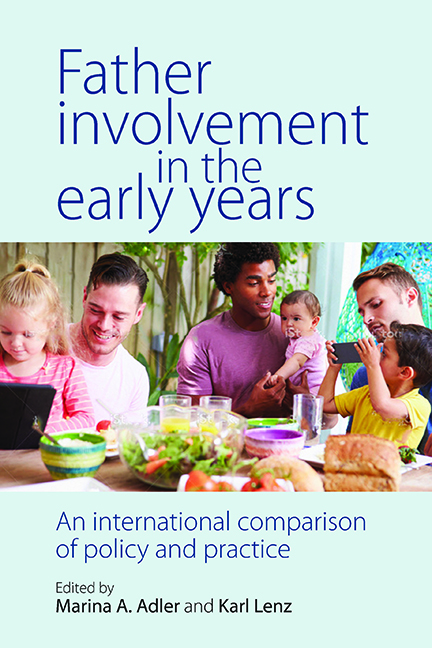One - Finland
Published online by Cambridge University Press: 01 September 2022
Summary
The cultural and policy context of fatherhood
As one of the northern social-democratic welfare states, Finland has striven for gender equality since the 1960s and persistent political struggles have borne fruit: in both 2012 and 2013, the World Economic Forum (WEF) placed Finland as the world's second-ranked country in closing its gender gaps in various areas of living, such as educational attainment, health and survival (WEF, 2013). This standing did not affect Finland's economy negatively: according to the WEF's Global Competitiveness Index, in 2013/14, Finland held the third position among 148 countries (Schwab, 2013). Finland also boasts well-functioning and highly transparent public institutions (first place) and private institutions (third place), and is considered to be one of the best-run and most ethical countries in the world. In addition, Finland occupies the top position in ‘health and primary education’ and in ‘higher education and training’, which is the result of a strong focus on education over recent decades (Schwab, 2013). This success is based on a culture of struggling for economic, social and educational equality (Välijärvi et al, 2007). Another factor may be the latent contribution of shared parenting, dual-earner parenthood and a relatively high paternal involvement in children's educational development.
The contemporary cultural context of moving towards gender equality appears to bode well for involved fatherhood in Finland, especially because there has been a consensus among politicians to offer coherent egalitarian family policies. The Finnish government has promoted the implementation of the principle of equal pay and the development of more equal and flexible family leaves (Hearn and Lattu, 2002). In fact, the allocation of family leave costs between the mother's and the father's employers and the options for increasing the father's leave-taking quota have been on the governmental agenda since the 2000s. Recently, it was specifically declared that ‘the objective is to increase the amount of leave days earmarked for fathers, provide more flexibility to how and when fathers use their family leave, and enable home childcare for longer, supported by the parental allowance’ (Programme of the Finnish Government, 2011: 110).
- Type
- Chapter
- Information
- Father Involvement in the Early YearsAn International Comparison of Policy and Practice, pp. 29 - 60Publisher: Bristol University PressPrint publication year: 2015



